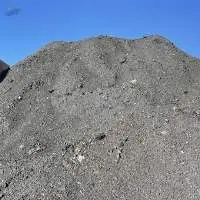
Features:
Primary crystal has good sphericity. It can be easily sintered. It also has characters of fine grain size, high purity, good grindability, narrow particle size distribution, good dispersion and high porcelain density. Our company developed this kind of powder for electronic substrate tape casting. For example d23:96 porcelain, its porcelain density can reach to
Supplier: Cast iron skulls, cast iron borings and turnings, steels skulls, eaf skulls, plate iron, mill scale, metal scrap, incinerated scrap (e46)
This Cast Iron slag is a by-product derived from the production of thermal insulating products. The byproduct is a ferrous slag which can be utilised in an electric arc furnace to produce crude steel. Physical Description On visual inspection, it appears to be made up of irregular shapes. Dimension: 500mm -800mm Chemical Composition Its chemical composition is homogeneous and stable with Fe contents in the range of 90 +/- 5% and P contents < 0.6% S around 0.15% and C% around 3.5%. Packing: Loose in container Loading: in 20 Container For further information, please feel free to contact us.
We are glad to propose 500 MT of stain less steel mill scale. Mill scale is formed on the outer surfaces during by the hot rolling lamination of stainless-steel products. At a visual inspection the material is a hard brittle sand and is mainly composed of iron oxides, mostly ferric, and is bluish black in colour, but it also contains considerable alloying elements such as chromium and nickel. The recovery ratio after melting in furnace for the most valuable alloy elements is: - Ni: 3.5 - 4.5% - Cr: 6-8% From the chemical and physical analysis performed on the scrap, and according to the European environmental rules, the material has been classified as a special non dangerous waste, listed in green list. In particular the mill scale can be classified as follows: Waste code: 10 02 10 The material is stored on cemented flooring, and it can be loaded loose in tipper trucks or containers. Chemical analysis of the material is available on request.
Desulphurisation Slag is an iron slag derived from the desulphurisation skimming process. This material is an iron by- product that is encapsulated in varying levels of contaminants (S,Mg,Si), but has a stable chemistry with 75 -80% chemistry. The level of Fe% in the slag has been estimated by water displacement test. This material con offer competitive advantages respect other metal scraps: Price; Stable Chemistry; The material can be loaded loose in 20 heavy duty container. For further details feel free to contact us.
Mill scale, is formed on the outer surfaces of plates, sheets or profiles when they are being produced by rolling hot iron or steel billets in rolling or steel mills. It looks like a hard brittle sand and is mainly composed of iron oxides, mostly ferric, and is bluish black in color. Being produced during the reheating, conditioning and hot rolling operation for the production of steel articles, the mill scale initially adheres to the steel surface and protects it from atmospheric corrosion, provided no break occurs in this coating. From the chemical and physical analysis performed on the scrap, and according to the european environmental rules, the material has been classified as a special non dangerous waste, listed in green list In particular the mill scale can be classified as follows: Einecs (european commission no.): 266-007-8 Waste code: 10 02 10 Basel code: b 12 30 Hs code: 2619.00
We are proposing about 1000 1200 Mt/ton monthly of iron slag derived from the desulphurisation skimming process. This material is a iron by- product that is encapsulated in varying levels of contaminants (S,Mg,Si). In order to enhance its usability, the material is processed and screened. We can propose two specifications of Iron Slag : 1. >85% Fe Average 600mm Max Fraction 2. >78% Fe Average 20-300mm Fraction The level of Fe% in the slag has been estimated by water displacement test. For any further information please feel free to contact
We are proposing about 2000tons of iron slag derived from the desulphurisation skimming process. This material is a iron by- product that is encapsulated in varying levels of contaminants (S,Mg,Si). In order to enhance its usability, the material is processed and screened. We can propose two specifications of Iron Slag - European Code: 19.12.01 - Basel Code: B1010 - HS Code: 2619.0020 - Quantity: 2000 tons currently available - Monthly quantity: 500-1000 tons depending on production - Size: 350 1200 mm - Fe content: from 77 to 86% - C content: above 2,5-3% - Bulk density: 2,8-3,4 tons/m3 - Loading type: loose in 20 (26-27 tons on average) The level of Fe% in the slag has been estimated by water displacement test. For any further information please feel free to contact us
Supplier: 1. carbon black
2. rubber crumb
3. precipitated silica
4. silica quartz ore purity: 98% available, silica quartz powder/purity: 99.9% available, silica lumps purity: 99% available
5. calcium chloride powder 74% cacl2 92% cacl2 94%
6. magnesium chloride flake
7. sodium meta bisulphite (food grade 94 96%)
8. red onion as per your required size.
9. sodium acetate anhydrous 99% sodium acetate trihydrate crystal 99%
10.pet preform & fiber, bottle, flakes,
11.bopp tapes
12. capsicum or bell pepper, ready to eat foods, ready green paste like ginger, garlic paste
Services: We also do logistic work for cif and we have 3rd party facilities like sgs on client chargeable base.
We are exporter of Calcined Alumina. According to different requirements, five series of products have been formed, including dry pressing, hot die casting, refractory, casting and setting, structural ceramic granulator, etc. It can be widely used in electronic equipment, structural ceramics, refractories, wear-resistant materials, polishing materials and other industries.






